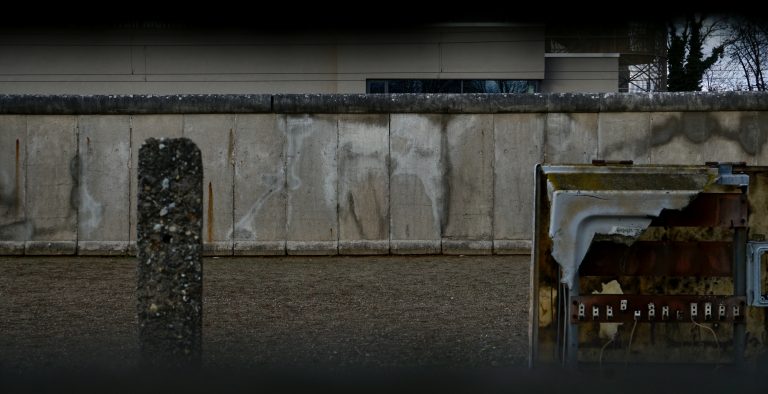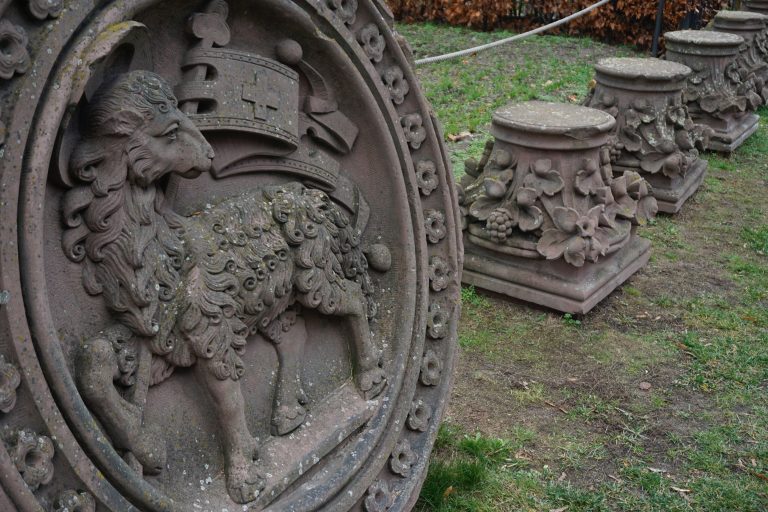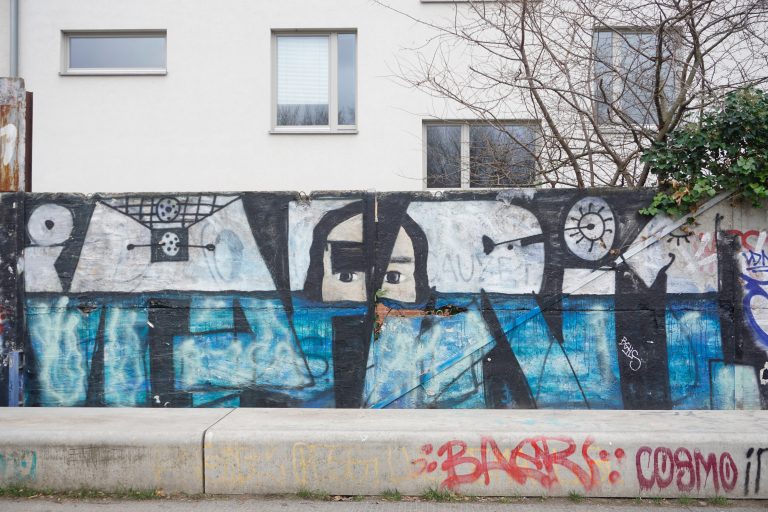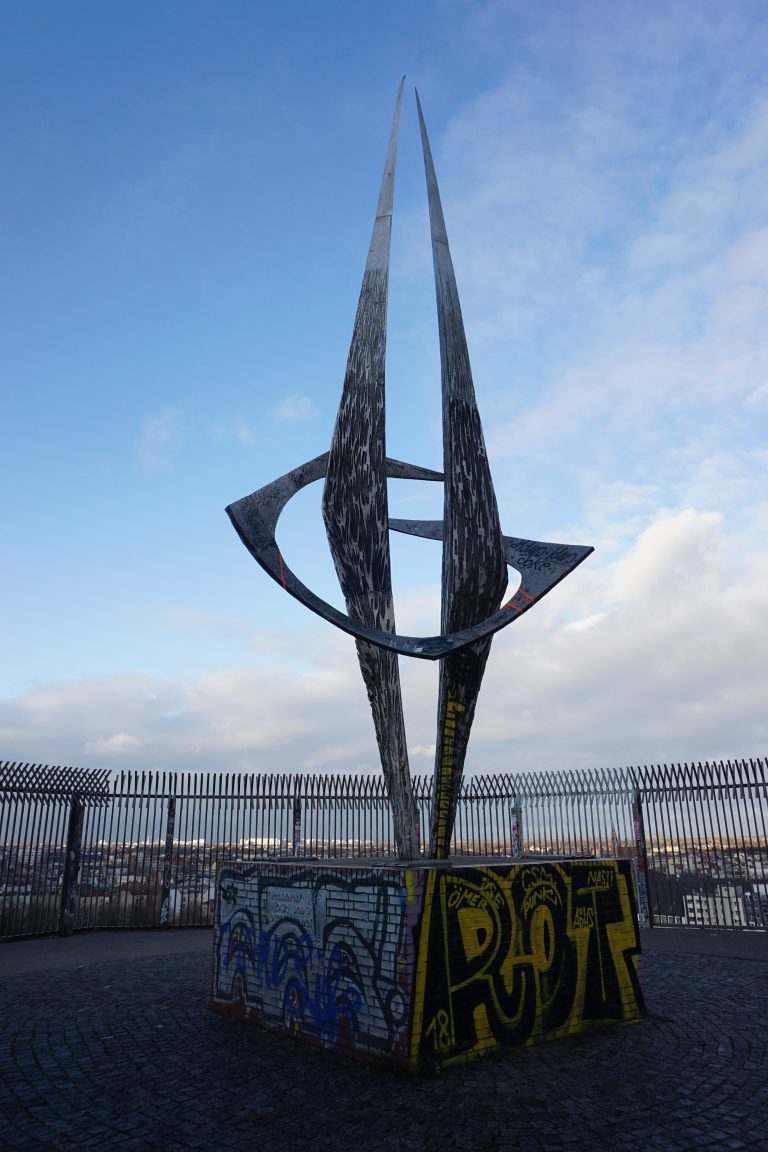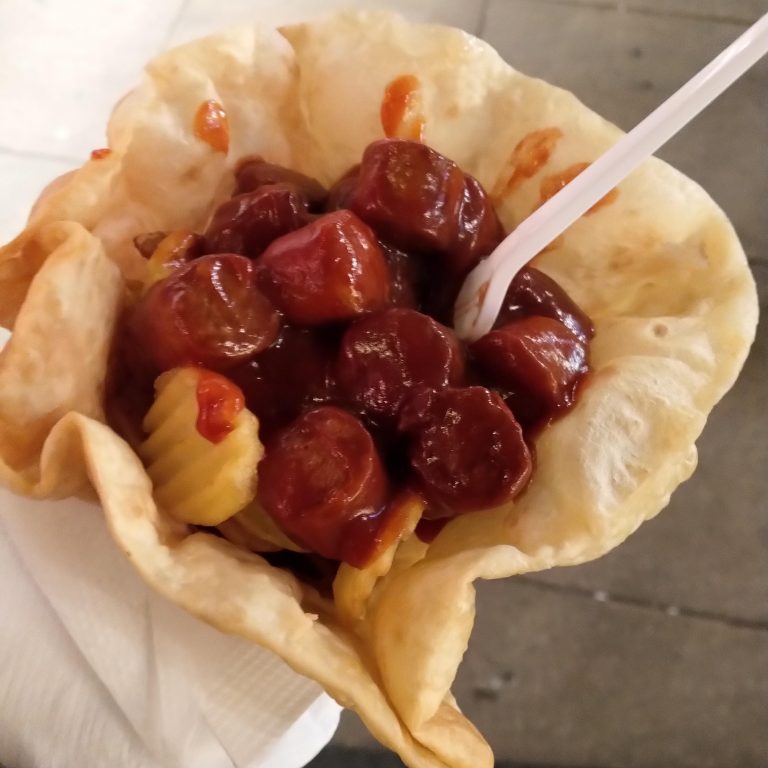Berlin Wall
Berlin Wall is no more. There are a few fragments of the wall remaining at the memorial site that spans a few blocks of Bernauer Straße. There is also a reconstruction of how the restricted zone was during the last days of the wall. The elements of this zone was never constant. SED always evolved the design to counter all the updated schemes of people trying to escape to West Berlin. The information centre and the exhibition was closed as it was a Monday. (I wasn’t aware of that.) However, there were a lot of information pillars that had images, texts, labels, videos and audios that gave me a good understanding of how things were post WWII until the demolition of the wall.
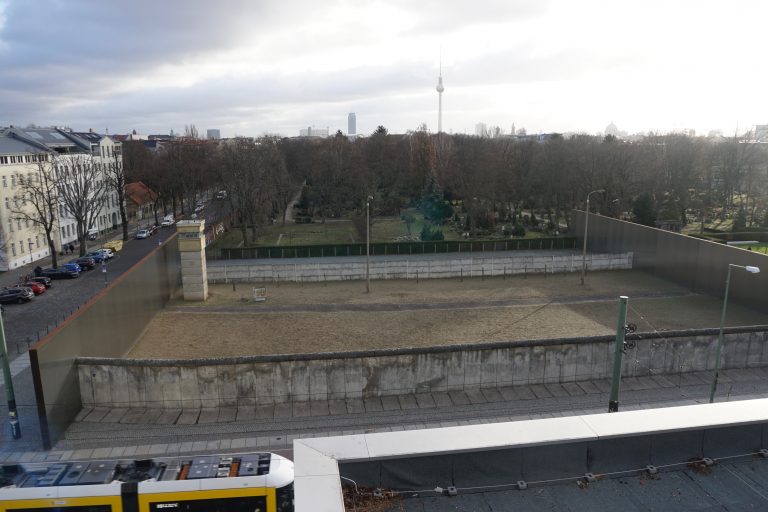
A reconstructed, preserved section of the border zone that can be only viewed from a high-platform across the road.
The Church of Reconciliation was demolished by SED in 1985. A chapel stood in its place with the outer boundaries of the old church demarcated by steel rails embedded in the ground. A piece of the original foundation was also preserved.
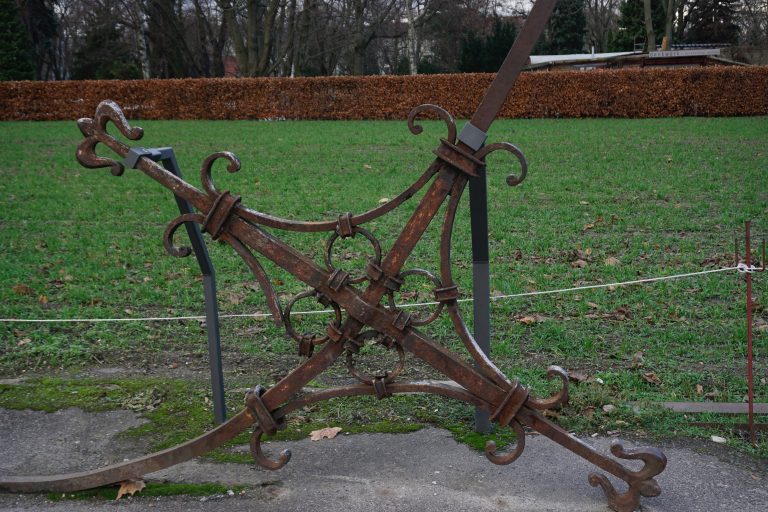
The original cross from the tower of the church was secretly protected and later given to the memorial foundation for display.
The foundations and part of the ground floor of a few buildings that used to be at the border in Bernauer Straße back then were also preserved. These buildings played an important role as they were used by many to escape East Berlin. Later, they were heavily monitored and the windows looking out towards Wes Berlin were sealed. Many families were divided by this partition.
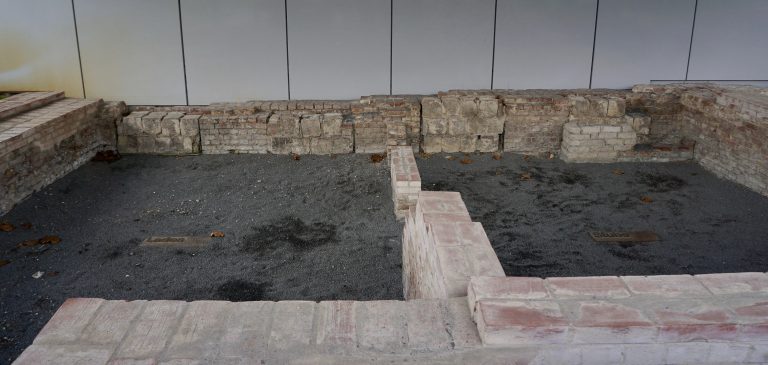
Remains of the ground floor of one of the buildings. The thick square blocks were used to seal windows.

Some of the current buildings had these paint-jobs done that were reproductions of photographs. Here is a scene showing people fleeing from East Berlin via a building at Bernauer Straße.
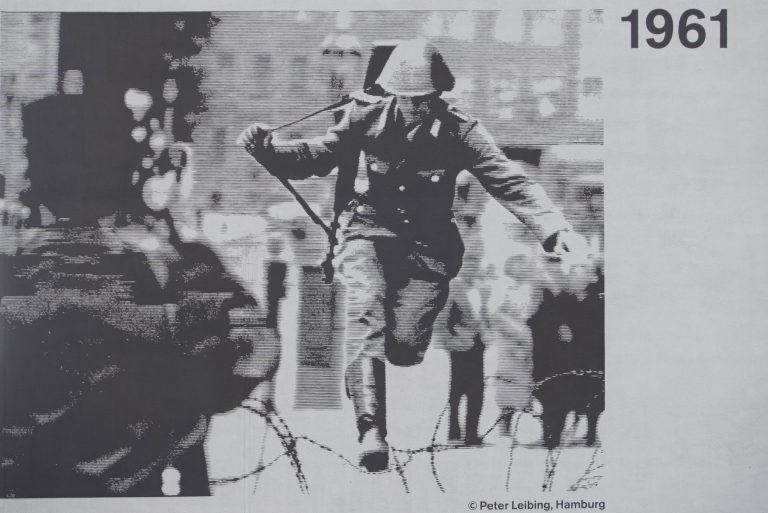
One of the walls had the reproduction of a photograph of Conrad Schumann, an East German state police, jumping over the Berlin Wall to escape. It is an iconic photograph taken by Peter Leibing. Sadly, Schumann committed suicide in 1998.
Only a small stretch of the original wall left near the memorial. It was, like all walls in Berlin, covered with graffiti.
A visit to the Berlin Underground.
I wanted to attend a tour of the Berlin Underground. There are four different tours organised by a non-profit called Berlin Unterwelten. I walked all the way from the Wall memorial to their ticketing office. While passing through Mauerpark, I chanced upon a graffiti artist. He allowed me to take his photo, only after he had covered his face.
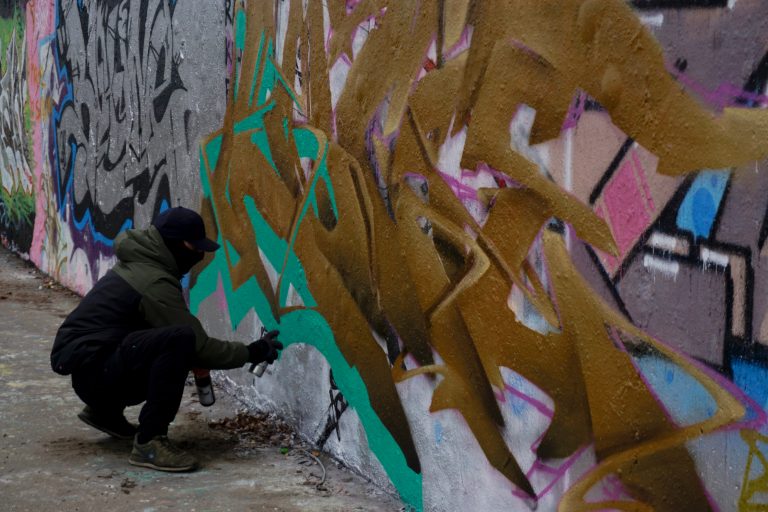
Berlin is filled with graffitis. This was the first thing that I noticed once I had stepped in the city. No exposed wall was spared. This was the first time that I spotted one of those creators.
I booked a ticket for a tour called Dark Worlds (in English; they also do the tour in six other languages) but it wasn’t supposed to start until another one-and-a-half hours. I grabbed a quick bite but had to wait inside the bakery as it had started to rain outside. Once the rain stopped, I headed for the Humboldthain Park where a Flak tower from WWII is located (Flack Tower III). It was close to the tour and I could return on time.
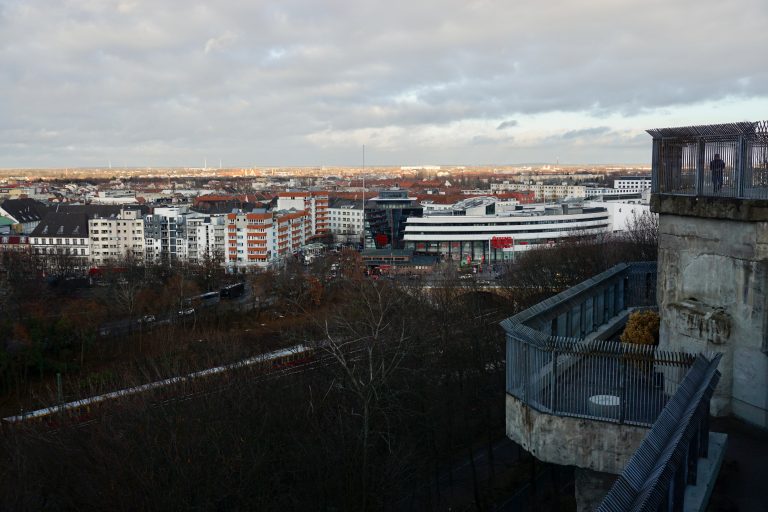
View of the city from the Flak tower. There is also a tour by Berlin Unterwelten guys but it is closed from November to March as bats hibernate inside these tunnels.
The tour started at 3 PM and lasted for exactly 90 minutes. (That says something about German punctuality.) Our guide, Carsten, walked us through a bunker that was used by the civilians during WWII air-raids. Photography was not allowed. So, all images are in my head (and none on the blog). There weren’t enough bunkers and not enough space in the bunkers to accommodate all. There was space for about 10% of Berlin’s population in all the bunkers of Berlin and for less than 1% in the entire country. This bunker, just above the subway beside the U-Bahn station of Gesundbrunnen, was one of the few underground bunkers. Most were built above ground and were eventually destroyed. There were displays about the public awareness systems and protocols for raid, debris of the raid, equipments sold for safety and conversion of normal homes into bunkers, shells and bombs, the forced-labour system of the Nazis and a pneumatic communication system.
I found the story of the forced-labour system fascinating. Many ordinary people, captured from Soviet territories, were “loaned” out to German companies, where they were paid dirt cheap compensation for a day’s work (around 40 Euros) and made to live in horribly maintained camps. These people bore the label “OST” (ostarbeiter; ost is east in German). The sad part was that Stalin considered them as “traitors”—people who worked for the enemy. They had to burn papers and proofs and make up some stories to get back to their home country once the Allied forces liberated these camps. Whoever had a history of being ostarbeiter on their records were ostracised in their country and had a difficult life afterwards. In the early 90s, when German government agreed to pay repartition, many didn’t have proofs. Whomever could produce any proof (most from Ukraine), got very less as compensation.
In a nutshell, the dark in the Dark World tour was literal as well as figurative.
While returning, I stopped by the Christmas market at Alexanderplatz. A single shop was selling a traditional street-food called Knuspernest (Crunchy Nest). I had one for my dinner with a cup of Glühwein.

